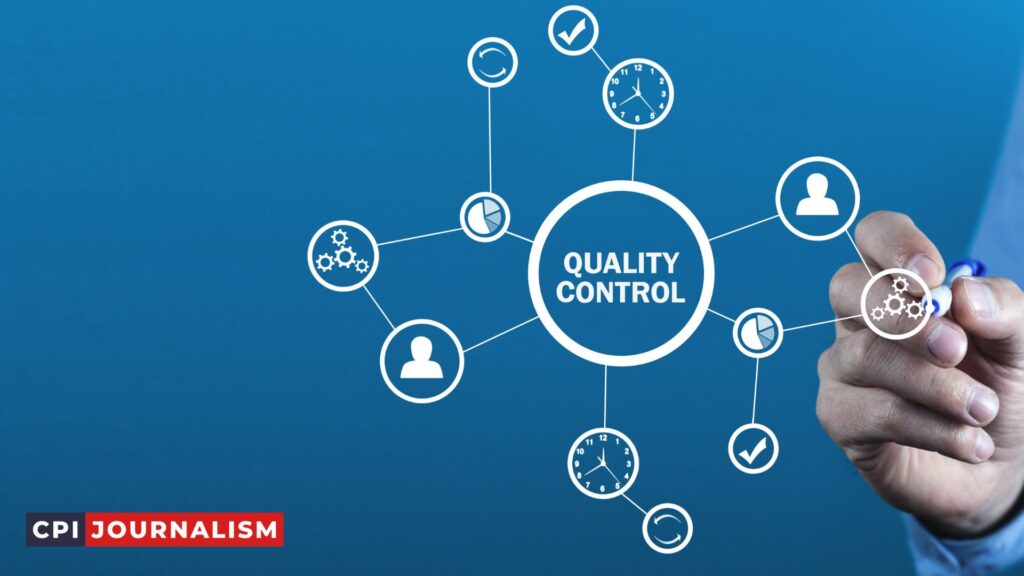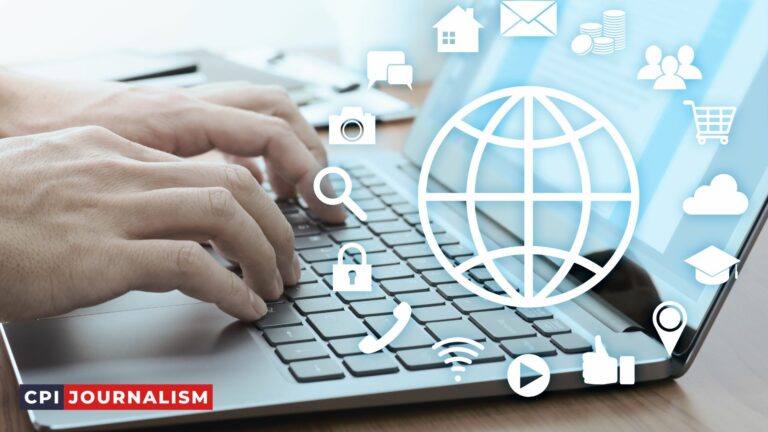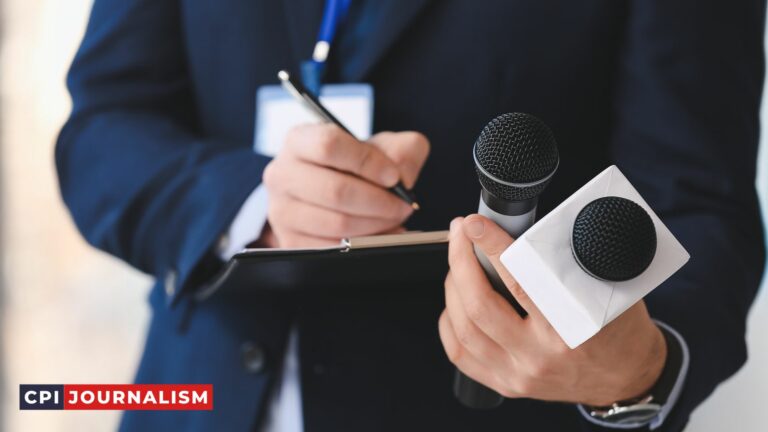What Are The Best Practices For Collaborating With Other Journalists And Media Outlets On Investigative Projects?
As an experienced journalist, I’m here to share the best practices for collaborating with other journalists and media outlets on investigative projects.
Good collaboration is essential for successful investigative journalism and can lead to breakthrough stories that have a real impact on our society.
I’ve gathered my insights and experiences to share the best practices for successful collaboration in investigative projects. With these tips, upcoming journalists can benefit from the wisdom and knowledge of experienced journalists and make the most of their collaborations.
A. Overview of Collaborative Investigative Projects
Collaborative investigative projects involve the cooperation of multiple journalists and media outlets to conduct investigative research and reporting on a specific subject matter.
The most successful collaborative investigative projects involve the sharing of resources, such as time, skills, and contacts, as well as the pooling of financial resources.
When conducting a collaborative investigative project, the first step is to identify the issue that the project will address and the level of research and reporting necessary to adequately cover the subject.
Once this is established, the next step is to form a team of journalists and media outlets who can bring different strengths and perspectives to the project. This team should include experienced investigative journalists who can provide leadership, support, and guidance as well as a diverse group of media outlets who can provide additional resources, such as contacts and financial support.
The collaborative investigative project should then create a project plan that outlines the goals and objectives of the project, the timeline for completion, the roles and responsibilities of each team member, and the budget for the project.
Once the project plan is in place, the team should develop a strategy for conducting the research and reporting, including identifying sources, scheduling interviews, and securing access to documents. The team should also establish protocols for sharing information and resources, such as a secure online platform for sharing data and documents.
Finally, the team should create a plan for disseminating the findings of the project, such as publishing a series of articles or a documentary film. This plan should include an evaluation process to assess the impact of the project and identify opportunities for improvement for future projects.
II. Benefits of Collaborating with Other Journalists and Media Outlets
Collaborating with other journalists and media outlets on investigative projects can bring numerous advantages to the table.
In addition to providing a platform to share resources, contacts, and ideas, these partnerships can also lead to greater public awareness and impact for the story.
Here are some of the benefits of collaborating with other journalists and media outlets on investigative projects:
1. Greater Reach: By working with multiple media outlets, a story can reach a larger audience. This can lead to increased public awareness of the issue and can result in greater impact for the story.
2. Access to Resources: Working with other media outlets provides access to additional resources, contacts, and ideas that can help support the investigative project. This can be especially helpful when covering complex stories that require a significant amount of research and reporting.
3. Shared Responsibility: By collaborating with other journalists, the responsibility of the story can be shared out. This can be a great way to reduce the workload of the project while still ensuring that the highest quality of work is produced.
4. Improved Quality: Collaborating with other journalists and media outlets can lead to improved quality in the story. Having multiple perspectives allows for different aspects of the story to be explored and reported on, resulting in a more thorough and accurate investigation.
Overall, collaborating with other journalists and media outlets on investigative projects can provide numerous advantages. By leveraging the resources, contacts, and ideas of multiple media outlets, the story can reach a larger audience and have greater impact.
Additionally, the workload can be shared out and the quality of the story can be improved. All of these factors combine to make collaboration a valuable tool for investigative projects.
A. Increased Reach
One of the main advantages of collaborating with other journalists and media outlets on investigative projects is the increased reach of the project.
By forming a collaborative network among different media outlets and journalists, the investigative project can become more widely disseminated and reach a larger audience.
This can be especially beneficial if the topic of the investigative project is of a highly sensitive nature, as the increased reach ensures that more people are made aware of the topic and the need to address it.
Additionally, this increased reach can also be crucial in terms of gaining access to more sources and information. With a wider audience, more people may be willing to come forward and share their experiences or knowledge about a particular topic.
This can be especially helpful in cases where the topic is controversial or difficult to access, as the collaborative network can open the doors to more potential sources.
Finally, the increased reach of an investigative project can also aid in making a larger impact on the public discourse. By sharing the project with a wider audience, more people are likely to engage with the topic and start a conversation about it.
This can be essential in terms of pushing for changes in policy or laws, as the increased reach of the project can draw more attention to the issue and help spur on action.
B. Increased Resources
One of the best practices for collaborating with other journalists and media outlets on investigative projects is to increase the resources available to the project.
By pooling resources, you can gain access to a larger audience, tap into a different set of expertise and contacts, and increase the likelihood of uncovering new information.
When it comes to resources, you and your colleagues should consider the following:
• Access to data: Data can be a powerful tool to support investigative projects. Having access to reliable and accurate data can offer a wealth of insight and can help to uncover patterns and trends that may otherwise go unnoticed.
• Financial resources: Investigating complex stories can be expensive. By pooling resources, you can access funds and personnel to ensure that the project can be completed.
• Human resources: People are the core of any investigative project. By collaborating with other journalists and media outlets, you can access a larger talent pool, which can help to ensure that the project is completed efficiently and effectively.
• Technology: Technology can also be an invaluable asset when it comes to investigative projects. By leveraging the most up-to-date tools and platforms, you can ensure that your project is completed quickly and accurately.
By increasing the resources available to the project, you can ensure that your investigative project is a success.
By pooling resources, you can access larger audiences, gain access to new data and personnel, and leverage the latest technologies to complete the project.
C. Increased Expertise
One of the most important best practices for collaborating with other journalists and media outlets on investigative projects is to increase your expertise.
Working with experienced journalists and media outlets can give you access to more resources and knowledge, and can help you develop your own skills.
It is important to learn from and share information with the other journalists and media outlets you are collaborating with. This can involve discussing research techniques, developing new sources, and sharing tips and tricks.
It is also important to use the information and resources of other journalists and media outlets to your advantage. This can help you become more knowledgeable about various topics and can also help you develop your skills in investigative journalism.
It is important to remember that collaboration is not a one-way street. You should be willing to share your knowledge and resources with the other journalists and media outlets that you are collaborating with, and you should also be open to learning from them.
By doing so, you can increase your expertise and become a more experienced investigative journalist.
D. Increased Credibility
Collaborating with other journalists and media outlets on investigative projects can be an important way to increase the credibility of your project. Working with a well-established journalist or media outlet can lend credibility to your project and give it a larger audience.
When considering potential collaborators, look for those who have a proven track record of success and reliability.
It is also important to carefully vet potential collaborators. Make sure any potential partners have a good reputation and a history of ethical practices. Ask for references and make sure they have a clear understanding of the project and the goals you are trying to achieve.
Finally, you should also consider the expertise that a potential collaborator can bring to the project. Look for someone with a unique perspective or in-depth knowledge of the topic. This can add credibility and value to your project and help you reach a wider audience.
III. Best Practices for Collaborative Investigative Projects
Working with fellow journalists and media outlets on investigative projects can be a great way to gain access to more resources and increase the scope of any given project.
In order to ensure that collaboration is as effective and beneficial as possible, there are a few best practices to keep in mind.
1. Establish Clear Roles and Responsibilities: Before starting any project, it is important to clearly define the roles and responsibilities of each collaborator. This will provide a framework for the collaboration, and ensure that everyone is on the same page in terms of expectations.
2. Develop a Communication Plan: It is important to develop a communication plan that outlines how the collaborators will communicate with each other throughout the course of the project. This should include details such as how often to check in and what types of information should be shared.
3. Set and Manage Deadlines: Collaborative projects can easily become derailed due to lack of a timeline and deadlines. It is important to set expectations from the outset, and to ensure that all collaborators remain on track in terms of meeting their goals.
4. Utilize Technology: Technology can be a great tool to help facilitate collaboration. There are a variety of tools available which allow for easy communication and sharing of information, such as video conferencing, file sharing, and project management software.
5. Leverage the Strengths of Each Collaborator: Each collaborator brings something unique to the table, and it is important to recognize and leverage these strengths. This will ensure that all collaborators are making the most of their skills, and that the project can benefit from the collective knowledge and expertise of the group.
By following these best practices, journalists and media outlets can ensure that their collaborative investigative projects are as successful and beneficial as possible.
A. Establish Clear Goals
Successful collaborations between journalists and media outlets on investigative projects depend on setting clear goals at the outset. It’s important to identify the overall purpose of the project and the specific objectives that need to be achieved in order to meet that purpose.
When setting goals, it is essential to ensure that everyone involved in the project understands the expectations, the timeline, and the budget. It is also important to keep the goals realistic and achievable.
It is also important to consider the sources of information that will be used in the project. Will the information come from interviews, public records, or other sources? Will there be a need for access to restricted areas or archives? Will there be a need for research or data analysis?
It is also important to consider the issue of ownership. Who will own the rights to the final product? Will there be any restrictions on further use or distribution of the product?
By establishing clear goals from the beginning, all involved in the project will know what is expected of them and will be better able to work together to achieve the desired results.
B. Develop a Plan of Action
The development of a plan of action is essential to successful collaborations in investigative reporting. It is important to start by setting clear goals and expectations, both for yourself and for your collaborator. This will help ensure that all parties involved are on the same page, and that the project can be completed in a timely and efficient manner.
Once the goals and expectations have been established, the next step is to develop a timeline for the project. This timeline should include both short-term and long-term goals, as well as deadlines for each task. It is also important to consider how resources will be allocated, as well as who will be responsible for different aspects of the project.
In addition to developing a timeline, it is also important to create a system for communicating with your collaborator. This should include a plan for how often you will communicate, as well as the methods of communication you will use.
This could include email, phone calls, video conferencing, or any other form of communication that both parties are comfortable with.
Finally, it is important to establish a system for reporting and tracking your progress. This could include weekly or monthly progress reports, as well as a system for collecting and analyzing data. This system should be tailored to the needs of the project, and should be easy to use and understand.
By following these steps and developing a plan of action, you can ensure that the collaboration process goes smoothly and that all parties involved are satisfied with the results.
C. Establish a Communication Protocol
When collaborating on investigative projects, it is essential to establish a communication protocol. This involves setting clear expectations and guidelines for communication among team members.
First and foremost, the team should decide on a primary communication tool, such as email, Slack, or an internal message board. All communication should be kept on this platform for easy reference and tracking.
Second, the team should set a timeline for communication. How often should team members check in? What is the response time for emails, messages, or calls? Who is responsible for initiating conversations? Setting a timeline for communication will help ensure that deadlines are met and that the project progresses smoothly.
Finally, team members should decide on the best methods for resolving conflicts. This could involve agreeing to discuss issues in a face-to-face meeting or setting up a conference call. Establishing a conflict resolution protocol will help ensure that disagreements are handled professionally and that the project remains on track.
By implementing these communication protocols, team members will be able to collaborate more effectively on investigative projects. This will ensure that deadlines are met and that the project is completed to the highest standard.
D. Set Ground Rules
Once you’ve identified potential collaborators and worked out the scope and timeline of your project, it’s important to set up some ground rules to ensure that everyone is on the same page.
Here are some of the best practices to keep in mind when setting ground rules for a collaborative investigative project:
1. Establish a Code of Conduct: Before you begin the project, it’s essential to establish a Code of Conduct for the team. This should include guidelines on how to treat each other, how to handle confidential information, how to deal with disagreements, and other important matters.
2. Establish Clear Roles and Responsibilities: Everyone involved in the project should have a clear understanding of their role and responsibilities. This will help to ensure that everyone is working together efficiently and effectively.
3. Agree on a Final Product: It’s important to have a clear understanding of what the final product of the project should look like. This will help ensure that everyone is working towards the same goal.
4. Agree on Shared Goals: Everyone involved in the project should understand the shared goals of the project. This will help ensure that everyone is working together to reach the same objectives.
5. Agree on a Communication Protocol: It’s important to establish a communication protocol for the project. This should include how often the team should communicate, what mediums should be used, and how issues should be resolved.
6. Establish a Conflict Resolution Process: It’s inevitable that conflicts will arise in any collaborative project. Establishing a clear process for conflict resolution is essential for ensuring that disagreements are handled professionally and respectfully.
By taking the time to set up ground rules for your collaborative project, you’ll be ensuring that everyone is on the same page and that the project runs smoothly. Doing this will help to ensure the success of your project.
E. Utilize Technology
Technology is an essential tool for collaboration in investigative journalism. It provides the platform to share data, research, and documents with team members and other media outlets. With technology, journalists can work on projects in real-time, regardless of their physical location.

Here are some of the ways that technology can be used to aid in collaboration:
1. Use secure file sharing systems. Secure file sharing systems like Dropbox, Google Drive, and Box can make it easy for journalists to share documents and research with team members. It is essential to use a secure system when sharing sensitive data to protect it from unauthorized access.
2. Create a private social media group. Private social media groups can be a great way to keep everyone in the investigative team informed of project progress. This type of group can also be used to share ideas and get feedback from other members of the team.
3. Make use of project management tools. Project management tools like Asana or Trello can help to keep everyone organized and on the same page. These tools can help to create tasks, set deadlines, assign tasks to team members, and track progress.
4. Utilize video conferencing. Video conferencing is a great way to stay in touch with team members and other media outlets. It can help to create a sense of team unity and collaboration, even if members are located in different places.
By leveraging technology, journalists can collaborate more efficiently on investigative projects. Technology can help to streamline the workflow, improve communication, and keep everyone organized. It is an essential tool for successful collaboration.
F. Divide Tasks and Responsibilities
When collaborating on investigative projects, it is essential to divide tasks and responsibilities in order to ensure the success of the project.
For starters, determine what roles each journalist or media outlet will play in the project. Assigning specific roles and responsibilities to each person or media outlet involved helps to keep the project organized and on track.
In addition, it is important to establish deadlines and timelines for all tasks involved. This is especially important when working with multiple journalists and media outlets, as it helps to ensure that everyone is on the same page.
Additionally, it is essential to have clear communication and collaboration protocols in place. This includes setting up regular check-ins, establishing a communication plan, and creating a timeline for reporting and publishing.
Finally, it is important to be flexible and open-minded when working with other journalists and media outlets. It is important to acknowledge that everyone is working towards the same goal, and be willing to make compromises and adjustments when necessary. This ensures that the project is completed in a timely manner and to the highest standards.
G. Establish a Timeline
One of the most important aspects of successful collaboration with other journalists and media outlets on investigative projects is to establish a timeline.
It is essential to create a schedule so that each team member knows exactly when tasks need to be completed and when to expect deliverables from their counterparts. This timeline should include target dates for the completion of research, interviews, data analysis, and other tasks related to the project.
In setting a timeline, it is important to remember that investigative projects can often take longer than expected. This is why it is important to plan ahead and build in extra time for unexpected delays. It is also important to be realistic about how much time it will take to complete each task.
It is also a good idea to set up regular check-ins with the team to ensure that the project is on track. These can be done in person, over the phone, or via video conferencing.
During these check-ins, team members can discuss any issues or problems they have encountered, assess the progress of the project, and make any necessary adjustments to the timeline.
Finally, it is important to remember to allow for time to review the project in its entirety before submitting it to the media outlet or publishing it.
This is an important step that should not be overlooked, as it can help ensure that the project meets the highest standards of accuracy and quality.
IV. Challenges of Collaborative Investigative Projects
Collaborative investigative projects are often complex and require a great deal of time and effort to succeed. As such, there are a number of potential challenges that journalists and media outlets should be aware of when embarking upon a collaborative effort.
One of the biggest challenges that can arise from a collaborative investigative project is the potential for delays and backlogs in the production of content.
With multiple people or organizations involved in the process, it is important to ensure that all parties are on the same page and that work is progressing as expected.
To prevent delays, journalists and media outlets should set clear expectations for deadlines and collaborate regularly to ensure that the project is moving forward as planned.
Another challenge of collaborative investigative projects is the potential for conflict between the parties involved. With multiple perspectives and opinions at play, it is important to ensure that all parties are able to express their views without fear of retribution or having their voice silenced.
To ensure that every voice is heard, journalists and media outlets should work together to create a respectful and inclusive environment where all involved can have their say.
Finally, collaborative investigative projects can also be vulnerable to outside interference and potential censorship.
In order to avoid this, journalists and media outlets should take measures to protect their sources and the integrity of the project. This can include encrypting communication, using secure file sharing services, and only sharing information with trusted individuals.
By being aware of the potential challenges of a collaborative investigative project, journalists and media outlets can ensure that their efforts are successful.
By setting expectations, creating an inclusive environment, and ensuring security, they can ensure that the project is able to reach its full potential.
A. Maintaining Objectivity
Collaborating with other journalists and media outlets on investigative projects can be a great way to access unique resources and gain new perspectives. However, it is important to remain objective and maintain journalistic integrity throughout the process.
One of the best practices for collaborating with other journalists and media outlets is to ensure that all parties involved in the investigation are aware of the expected outcome and that the standards of accuracy and fairness are met. It is important to ensure that any information gathered is used to provide a balanced and unbiased perspective.
Another best practice is to be clear on the roles and responsibilities of each party. It is important to establish who will be responsible for the research and the presentation of the findings. It is also important to establish who will have the final say on the final product.
Finally, it is essential to remain open to different perspectives and be willing to challenge and question each other’s assumptions.
If one party’s opinion differs from the other, it is important to discuss the differences and come to an agreement on the best approach. This will ensure that all parties involved are satisfied with the results and that the final product is fair and accurate.
B. Managing Conflicting Interests
When collaborating with other journalists and media outlets on investigative projects, it’s important to manage conflicting interests. Not every media outlet will have the same goals or objectives for a project, and it’s important to be aware of and manage these potential conflicts.
First and foremost, journalists should establish a clear objective for the project and make sure everyone involved is in agreement. Establishing a common goal will help ensure that everyone is on the same page and working towards a common goal.
It’s also important to be aware of any potential biases or agendas that other journalists may have. Journalists should strive to maintain an objective perspective, and if any agendas or biases are detected, they should be discussed and addressed before proceeding.
In addition, it’s important to be aware of potential conflicts of interest. Journalists should ask themselves if any of their sources or contacts have any potential conflicts of interest that could influence the outcome of the project. If any conflicts are detected, they should be disclosed and addressed before proceeding.
Finally, journalists should be aware of any potential competition or rivalry between different media outlets. It’s important to maintain a cooperative and collaborative environment, and any potential competition should be discussed and addressed before proceeding.
By following these best practices for managing conflicting interests, journalists can ensure successful collaboration and investigative projects.
C. Ensuring Quality Control
Quality control is an essential part of any investigative project. Journalists should take the time to establish rigorous standards and protocols that will ensure the accuracy and integrity of the reporting.

Here are some best practices to consider when collaborating with other journalists and media outlets on investigative projects:
1. Establish a Quality Control Plan: Establish a quality control plan to ensure accuracy and integrity in the reporting. Set clear goals, procedures, and expectations for the project. Define the roles and responsibilities for each team member.
2. Perform Regular Reviews: Schedule regular reviews of the data and reporting to ensure accuracy. Have an independent reviewer look over the project to ensure that it meets the established standards and protocols.
3. Utilize Fact-Checking Procedures: Establish a fact-checking process to ensure accuracy. Have an independent fact-checker look over the project to verify the accuracy of the data and reporting.
4. Maintain Transparency: Make sure that all team members are aware of the project’s goals and objectives. Encourage team members to ask questions and provide feedback.
5. Utilize Quality Assurance Techniques: Utilize quality assurance techniques such as peer review, peer editing, and peer evaluation to ensure accuracy and integrity in the reporting.
These are just a few of the best practices for ensuring quality control in investigative projects. Journalists should take the time to establish a quality control plan and utilize quality assurance techniques to ensure the accuracy and integrity of their reporting.
D. Dealing With Confidentiality
When engaging in collaborative investigative projects, it is essential to ensure the strictest confidentiality of the information shared between parties.
As a journalist, it is important to remember that you are not only responsible for the safety and security of the sources of your story, but also for the integrity of the project itself.
To ensure the utmost privacy and safety of your sources, it is best to agree on and adhere to specific confidentiality protocols between all parties involved.
This includes determining who has access to the information, establishing procedures for handling sensitive material, and setting clear rules around the sharing of information with third parties.
It is also important to consider the legal implications of your actions when dealing with confidential information. It is essential to seek legal advice and guidance when in doubt, to ensure that the material is handled in accordance with the applicable laws and regulations.
Finally, if you are working with an external partner on a project, it is important to establish an agreement around the use of the material, including who owns the rights to it and the conditions of its use. This will help to ensure that both parties are protected and that the project is handled with the utmost professionalism.
V. Conclusion
Collaborating with other journalists and media outlets on investigative projects can be a rewarding experience. It can lead to bigger stories and better outcomes. However, it is important to understand the best practices for such collaborations and to adhere to them in order to ensure success.
First and foremost, it is essential to establish trust and respect between the parties involved. All parties should be open to sharing information and resources and should be committed to working together for the common good. Communication should be frequent and honest, and all parties should strive to maintain a professional relationship.
Second, it is important to create a collaborative structure that is mutually beneficial. This structure should ensure that the project is moving forward, that all parties are contributing, and that all parties have access to the resources they need.
Finally, it is important to document all aspects of the collaboration. This documentation should include reporting protocols, communication protocols, deadlines, and any other information relevant to the project. This documentation will help ensure that the project is successful and that the collaboration is productive.
In conclusion, collaborating with other journalists and media outlets on investigative projects can lead to better outcomes, greater stories, and greater impact.
By following the best practices outlined in this article, journalists and media outlets can ensure that their collaborations are successful and rewarding.
A. Summary of Best Practices
1. Establish Clear Goals: Before collaborating with any other journalist or media outlet, it is important to have a clear understanding of the goals and objectives of the investigative project. Discuss with colleagues and stakeholders the purpose of the project, the intended audience, and the timeline for completion.
2. Choose the Right Partners: Carefully select the journalist or media outlet that you will collaborate with. Consider their reputation, experience, and expertise in the area of investigation, as well as their proven record of successfully completing similar projects.
3. Establish Clear Ground Rules: Establish clear ground rules for the collaboration, including expectations for communication, deadlines, roles, and responsibilities. Also, discuss potential conflicts of interest and how they will be addressed.
4. Secure a Written Agreement: Determine the details of the collaboration and secure a written agreement between all partners. The agreement should include the roles and responsibilities of each partner, as well as the terms and conditions of the collaboration.
5. Utilize the Strengths of Each Partner: Take advantage of the strengths of each partner and make sure that each partner is contributing their unique skills and resources to the project in an efficient and effective manner.
6. Leverage Technology: Utilize technology to enhance collaboration and communication, including video conferencing, document sharing, and cloud-based collaboration tools.
7. Establish a Culture of Transparency: Establish a culture of transparency and open communication between partners. This will help to ensure that all partners are kept informed and in the loop on the progress of the project.
8. Celebrate Success: Celebrate the successes of the collaboration and recognize the hard work and dedication of all partners. This will help to foster a spirit of collaboration and help ensure a successful completion of the project.
B. Benefits of Collaborative Investigative Projects
Collaborative investigative projects can have many benefits for journalists and their media outlets.
Here are some of the greatest advantages of working together on investigative projects:
1. Cost Savings: Working together on an investigative project can help to reduce costs. By combining resources, journalists and media outlets can share the costs of interviewing sources, conducting research, and gathering data. This can help to reduce overall expenses and increase the return on investment for the project.
2. Greater Reach: Collaborative investigative projects can reach a wider audience. By combining the resources of multiple journalists and media outlets, the project can reach more people and have a greater impact.
3. Improved Quality: Journalists can learn from each other and benefit from the skills and knowledge of their peers. Collaborative projects can help to ensure that the quality of the work is at its best, as multiple perspectives can be brought to bear on the project.
4. More Resources: Combining the resources of multiple journalists and media outlets can also help to provide more resources for a project. This can include access to additional sources, research, and data that can help to improve the quality of the investigation.
5. Time Savings: Working together on an investigative project can also help to save time. By pooling resources, journalists can work together to complete the project more quickly, which can help to reduce costs and improve the return on investment.







